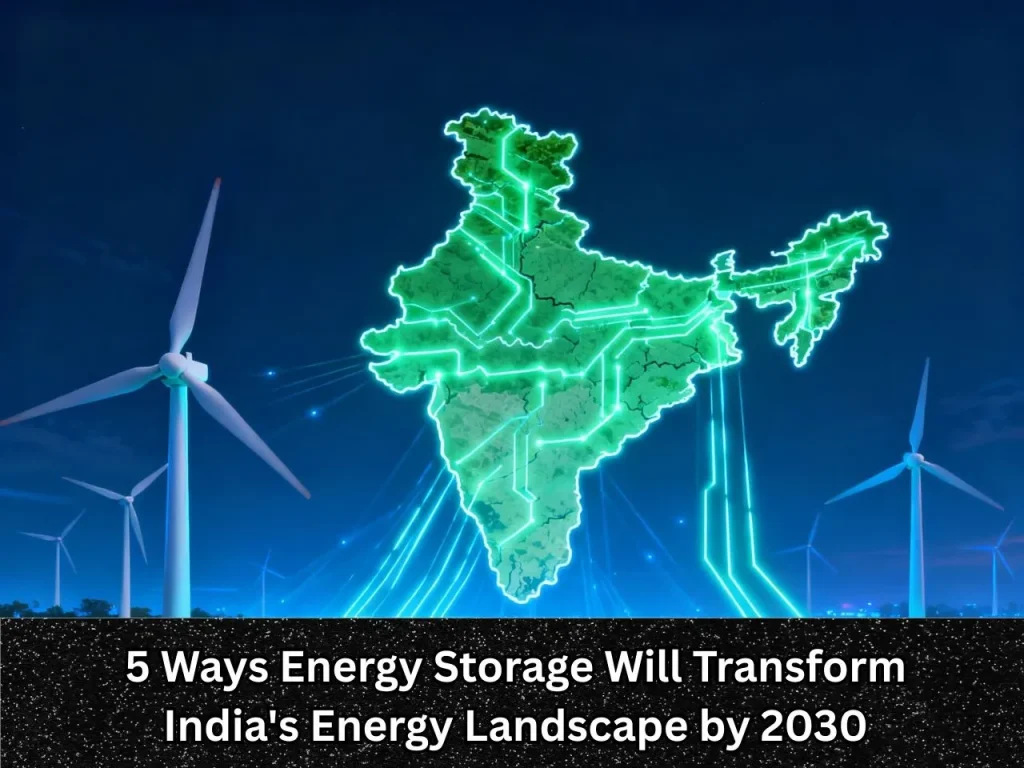
India’s energy landscape is poised for a dramatic transformation over the next decade, driven by the critical role energy storage will play in achieving the nation’s ambitious clean energy goals.
According to a comprehensive study by the India Energy and Climate Center (IECC), energy storage systems will fundamentally reshape how the country generates, distributes, and consumes electricity by 2030-32.
Here are the five ways energy storage will change India’s energy landscape by 2030.
#1 Enabling 500 GW of Clean Power Without Additional Coal Capacity
The most significant transformation that storage will deliver is eliminating the need for new coal-fired power plants while supporting India’s target of 500 GW of non-fossil capacity by 2030.
The study reveals that with adequate energy storage deployment, no additional coal capacity beyond the 27 GW currently under construction will be economically justified by 2030.
India requires 61 GW of energy storage by 2030 and 97 GW by 2032 to achieve this transformation. Without storage, the country would need 80 GW of new thermal capacity by 2032, forcing coal capacity to reach 294 GW and pushing the average coal plant capacity factor down to dangerous levels of 41-43 percent gross. This would strand significant existing assets and undermine the economics of the power sector.
By contrast, with proper storage deployment, existing coal assets can operate more efficiently at a 51 percent gross capacity factor by 2032.
#2 Transforming Grid Operations Through Daily Energy Arbitrage
Energy storage will fundamentally change how India’s power grid operates daily, providing critical flexibility to balance supply and demand. Storage systems discharge during evening and morning peak hours, typically operating 4 hours per day.
The analysis indicates that these batteries will complete approximately 300-350 cycles annually, reflecting their primary role in managing daily peak loads. During peak demand hours, energy storage discharge will reach 73 GW by 2032, playing a critical role in meeting evening peak demand when solar generation drops.
This transformation will be particularly crucial as renewable energy generation excluding large hydro increases from 210 TWh in 2023 to 1,025 TWh by 2030 and 1,195 TWh by 2032. Storage will enable the effective utilisation of this massive increase in variable renewable generation across the grid.
#3 Managing Unprecedented System Variability and Ramping Requirements
Storage will become essential for managing the dramatic increase in grid variability introduced by large-scale solar and wind deployment.
By 2032, maximum net load ramps could reach as high as 160 GW per hour, with net additional up-ramps due to renewable energy as high as 110-120 GW per hour on top of load-only ramps. These ramps could be met by storage (providing ~110GW/hr of “up” ramps), along with other resources, including thermal and hydro.
/filters:format(webp)/saur-energy/media/media_files/2025/09/25/system-hourly-ramping-needs-2025-09-25-03-37-12.png)
System hourly ramping needs (all-India duration curve) in the Reference Case in FY 2032 – load only ramps, net-load ramps (ramping needs of the system after integrating RE), and ramping support provided by energy storage
Storage systems will provide 110 GW per hour of up ramps and 65 GW per hour of down ramps to help manage this unprecedented variability, the report predicts. This capability will be critical during sunrise and sunset periods when solar generation changes rapidly, creating significant challenges for grid operators.
The study demonstrates that the system can manage this variability with energy storage and limited renewable energy curtailment of only 2.7 percent. This relatively low curtailment level shows how storage will maximise the utilisation of India’s massive renewable energy investments.
#4 Driving a Shift to 4-Hour Storage Duration for Deeper Grid Balancing
The optimal storage duration will evolve significantly between now and 2032, reflecting changing grid needs. Until 2027, 2-hour batteries will dominate, primarily providing support during evening peak demand.
However, from 2027 onwards, 4-hour batteries will become predominant, offering deeper grid balancing and greater flexibility.
/filters:format(webp)/saur-energy/media/media_files/2025/09/25/screenshot-2025-09-25-at-2025-09-25-03-32-52.png)
Energy storage installed capacity by duration in the Reference Case
By 2030, the optimal storage mix will be 20 GW of 2-hour batteries and 31 GW of 4-hour batteries. This will shift further by 2032 to 20 GW of 2-hour systems and 67 GW of 4-hour systems. This evolution reflects the growing need for longer-duration storage as renewable penetration increases and grid balancing requirements become more complex.
The transition to 4-hour storage will enable better management of longer periods of renewable energy variability. In addition, it will help provide additional services beyond simple peak shaving, including frequency regulation and ancillary services.
#5 Revolutionising Power Sector Economics and Investment Patterns
Storage will fundamentally transform the economics of India’s power sector, requiring massive new investments while delivering substantial cost savings. The electricity generation sector will need about USD 300 billion in new investments by 2030. Energy storage alone will need about USD 30 billion of new investments by 2030.
Despite this massive investment requirement, average power procurement costs will remain stable at around INR 5.37-5.41 per kWh by 2030, compared to INR 5.46 per kWh historically. This remarkable stability occurs despite nearly doubling electricity demand and massive clean energy expansion.
Furthermore, co-locating storage with solar plants will offer substantial cost-saving opportunities, reducing capital costs by 15-20 percent due to shared infrastructure components. Solar power can directly charge batteries without conversion, increasing round-trip efficiency and transmission infrastructure utilisation.
Storage locations will largely coincide with solar capacity and large load centers, particularly in Gujarat, Rajasthan, Maharashtra, Uttar Pradesh, Andhra Pradesh, and Telangana. This geographic concentration will optimize both renewable energy utilization and grid stability benefits.
The transformation that energy storage will bring to India’s power sector by 2030-32 represents one of the most significant shifts in the country’s energy history. From enabling massive renewable deployment without additional coal to fundamentally changing daily grid operations, storage will be the critical enabler of India’s clean energy transition.
saurenergy.com

